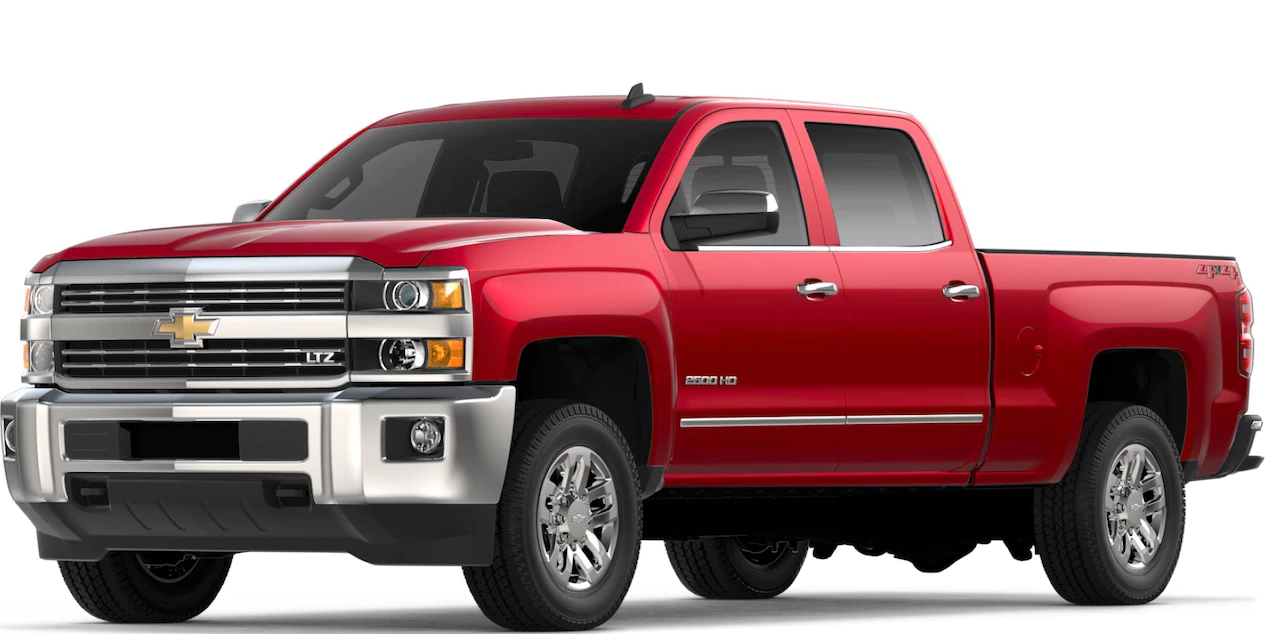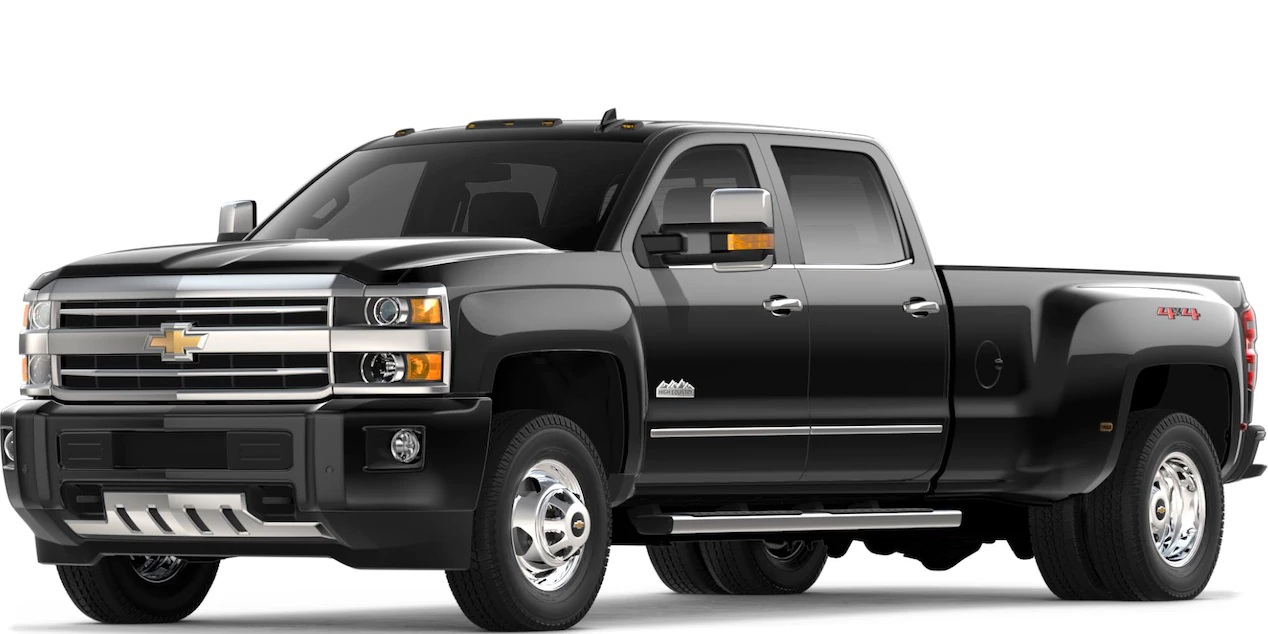What to Pay Attention to When Shopping for a Towing Vehicle
Shopping for a new vehicle is a big undertaking. You want to make sure you're getting good value on a vehicle that will last for years to come, but also check off all of the boxes on your wishlist. Is there enough interior space? Does the vehicle have a good safety rating? Can it meet your towing needs? There are a number of towing-related specs to look at, starting with towing capacity. Check out the graphic below for a look at the various towing features you'll want to consider.
Other Key Aspects Of The Towing Vehicle Include
Drive system: There are plenty of trucks available with 2-wheel drive systems, but the best trucks, particularly for towing, are 4-wheel drive. A front-wheel drive system isn't going to give you the power, stability, and control that a 4-wheel drive truck can. If you're towing something small you can get away with front-wheel drive, but in general, your best bet is a 4-wheel drive truck.
Chassis: Sport-utility vehicles (SUVs) are often used for towing, but truck chassis are usually bigger and stronger, making trucks better-suited for towing than SUVs. Typically, only the largest SUVs share the same chassis and framework as trucks.
Tow package: If you're looking for a truck with great towing ability, be sure to choose one with a good tow package to ensure the truck can safely meet your towing needs. From engine cooling systems and special coolers for the truck's transmission to weight-distribution hitches and wiring harnesses, a tow package is necessary for properly outfitting your truck to effectively haul your trailer.
Transmission: Many car and truck enthusiasts prefer the feel of a manual transmission, but for towing purposes, it's a good idea to go with an automatic. Not only will it be easier for other people to drive your truck if needed, but automatic transmissions give you more control, which is always a good thing, especially with a heavy trailer in tow. Trucks with automatic transmissions usually have a higher towing capacity than those with manual.
Wheelbase: The distance between the front and rear axles is known as the wheelbase. This measurement means a great deal when it comes to the stability of your truck during towing. A wider, longer wheelbase helps prevent the weight of your trailer from pulling down on the rear axle and causing the front axle to rise, which hampers traction and control.
Key Towing Terms to Know and Understand for your Silverado
If you’re new to towing, there’s some terminology you need to know and understand. Once you master these terms, you’ll possess a much greater understanding of how to tow with your vehicle.
Conventional Towing: Conventional towing refers to towing on the ball, the most common type of towing configuration.
Fifth Wheel Towing: The fifth wheel replaces the trailer hitch, and is itself the mechanism attaching the tow vehicle and trailer. Use of the fifth wheel increases the turning radius substantially.
Curb Weight: The vehicle’s weight with standard equipment and its full capacity of fuel, oil and other coolants. Curb weight doesn’t include passengers or any optional vehicle equipment.
Gross Vehicle Weight Rating (GVWR): The amount specified by the manufacturer as the vehicle’s maximum loaded weight. For the vehicle, the GVWR includes the vehicle’s weight, passenger weight, any cargo, fuel and the trailer’s tongue weight. For the trailer, the GVWR includes the trailer’s weight and the total weight of all items carried. You’ll find a vehicle’s GVWR located on a sticker on a door jamb, as well as in the owner’s manual.
Gross Combination Vehicle Weight Rating (GCWR): This is the amount specified by the tow vehicle manufacturer as the total weight the combination of truck and trailer can safely weigh. Note that the manufacturer’s ratings are based primarily on boat hauling. If you plan to haul horses or other livestock – emphasis on “live” weight – consider that this cargo moves around. In those cases, you’ll want a tow vehicle rated to carry more than your basic GCWR.
Payload: Gross payload refers to the weight of everything carried in – or on – the vehicle. This options as well as passengers and cargo as well as options. The net payload refers to the amount of weight the vehicle can carry after subtracting the gross payload. The payload rating is the maximum permitted payload for the vehicle.
Tongue Weight: The weight of the trailer that puts pressure on the trailer hitch in a bumper pull, or presses down on the rear axle in a gooseneck. Excess tongue weight can damage the drivetrain and suspension, but can also hold the tow vehicle down in the rear, resulting in the front wheels rising. Too little tongue weight may cause the back of the vehicle to move upward, causing jackknifing or worse. For bumper pulls, tongue weight should comprise 10 to 15 percent of the trailer’s overall weight. For goosenecks, 25 percent of the trailer’s weight is necessary.
Towing Capacity: All of these terms are important, but towing capacity is the number you need most when choosing a vehicle. You don’t ever want to exceed the maximum towing capacity of your vehicle, or even come close. Note that towing capacity depends on whether or not your truck is “properly equipped,” meaning that you'll need to opt in to certain additional features on the vehicle to hit that max capacity number.
Differences Between Silverado Truck Classes
Even once you've decided on a Chevrolet Silverado, the work isn't done. Sure, you've made a great choice by narrowing your list down to include such a reliable model from one of the country's most well-respected truck manufacturers, but you still need to give your purchase some additional thought and research because there are a number of Silverado truck models to choose from.
SILVERADO 1500
The Silverado 1500, winner of the 2015 "Most Dependable Large Light Duty Pickup" Award from J.D. Power, has a maximum towing capacity of 12,500 pounds and a max payload of 2,250 pounds. Buyers can choose from a number of engines, including a 4.3-liter V6, a 5.3-liter V8, and a 6.2-liter V8, but if towing is one of your primary concerns, the 6.2-liter V8 is the best choice. This engine provides the truck max towing capacity thanks to 420 horsepower at 5600 rpm and 460 lb.-ft. of torque at 4100 rpm. The four-door Double Cab Standard Box or Crew Cab Short Box LTZ are both equipped with these top towing specs.
SILVERADO 2500HD

If you thought the Silverado 1500 was a towing beast, wait until you see the Chevy Silverado 2500 HD. This powerful truck has the right tools for any towing job and a number of customizable features to meet your needs. You can haul with confidence thanks to the 14,800 pounds of towing capacity the truck's standard Vortec 6.0-liter V8 engine provides, or upgrade to the Duramax 6.6-liter Turbo-Diesel V8 for a whopping 18,100 pounds of towing capacity. The truck also has a special towing and hauling mode which adjusts the transmission to reduce shift cycling while towing heavy loads or driving on steep terrain.

The Chevrolet Silverado 3500HD is the ultimate towing vehicle. Its standard Vortec 6.0-liter V8 engine packs 14,600 pounds of towing capacity, while drivers who choose to upgrade to the Duramax 6.6-liter Turbo-Diesel V8 with four-wheel drive can haul an absolutely incredible 23,300 pounds. The truck's StabiliTrak with Trailer Sway Control feature will detect if the trailer being towed begins to sway or swerve and automatically apply the vehicle's brakes and the trailer's brakes to help get the trailer back under control. An available spray-on bedliner, cargo tie-down hooks, and a cornerstep rear bumper make hauling and towing an absolute joy with the Silverado 3500HD.
Comparing the Silverado 1500, 2500, & 3500
While all three Silverado trucks are cut from the same cloth and share many of the same specs, there are some important differences to consider:
Chassis Specifications
All three Silverado models have impressive chassis wheelbases for towing. The Silverado 1500 has a wheelbase of 143.5 inches, an overall length of 230 inches, and a ground clearance of 8.9 inches. The Silverado 2500HD has a wheelbase of 153.7 inches, an overall length of 239.5 inches, and a ground clearance of 9.65 inches. The Silverado 3500HD has a wheelbase of 167.7 inches, and overall length of 258.5 inches, a ground clearance of 8.27 inches. Simply put, all three of these trucks are more than capable of towing, with heavier-duty towing capability offered by the larger varieties.
Curb Weight
The curb weight of each Silverado model varies based on the particular package and features you select, but in general, the curb weight of the Silverado 1500 is 4,515 to 5,461 lbs. For the Silverado 2500HD, expect a curb weight of 5,741 to 6,689 lbs. The Silverado 3500HD has a curb weight of 5,985 to 6,901 lbs.
Interior Space
All three Silverado models have a six-passenger maximum capacity and very similar cabin space and dimensions. Regardless of which model you choose, rest assured there will be ample space for a comfortable ride.
A Chevrolet Silverado Will Meet Your Towing Needs
If you want a truck you can count on for towing, the Chevrolet Silverado model is for you. The Silverado 1500 is a great dual-purpose commuter vehicle that can also be used for recreational or light towing. The Silverado 2500HD is a step up from the base 1500 model, fit for rougher terrain and more serious towing uses, while the Silverado 3500HD is the ultimate truck for towing and a top choice among individuals looking to haul extremely heavy loads. As long as you do your research to ensure you select the best vehicle based on the criteria you're looking for, you will absolutely find a Silverado truck that meets both your budget and your specific towing needs. While this is by no means an exhaustive shopping guide, we hope we have covered the most common concerns of shoppers looking for Chevrolet truck backup cameras.








